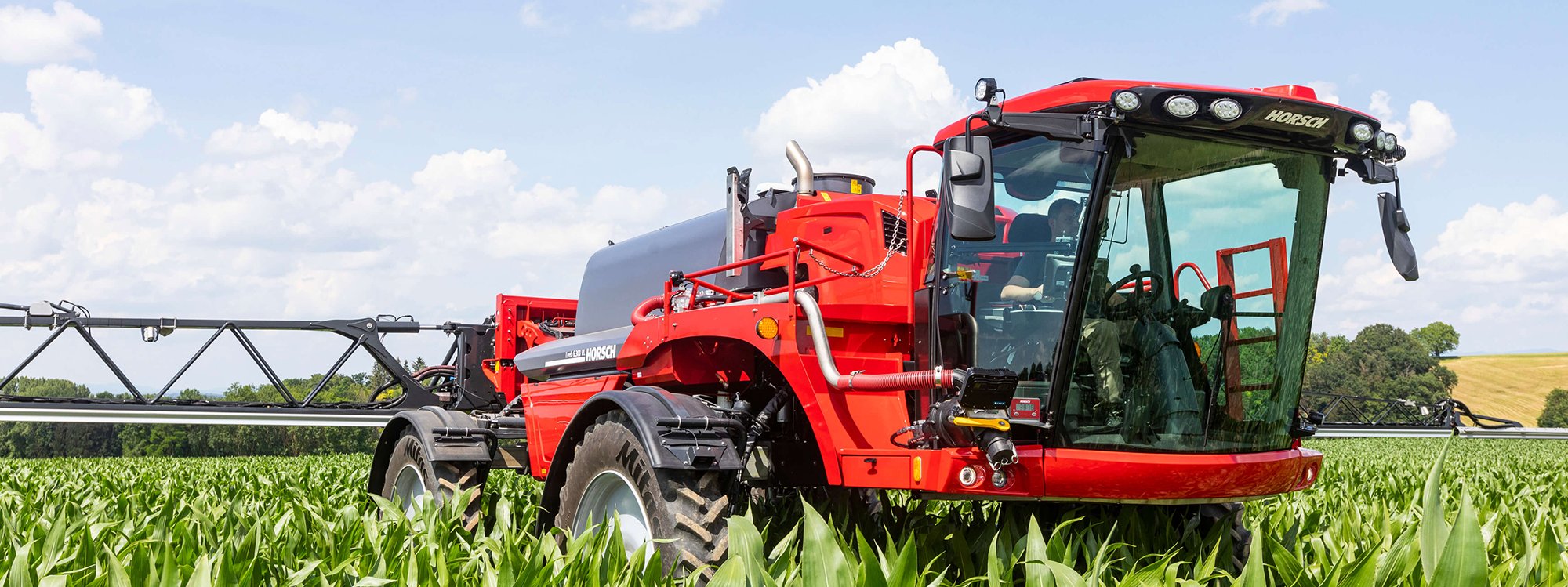Organic farming and an individual Pronto

For modern farmers organic farming is not only a question of ideology but rather of know how. Fact is: when mineral fertiliser or plant protection products are off limits, the real farmer is needed.

Pierre and Kerstin Ramnick’s resettled farm is situated 20 kilometres west of Würzburg (Bavaria). The annual average temperature is 9° Celsius and the average rainfall is 660 millimetres per year. Sugarbeet cultivation is possible, but has been abandoned on the Ramnick farm because of the disproportionately high efforts that were necessary - especially for hoeing. The family cultivates 292 hectares 23 additional hectares are sublet to a co-operation partner who grows carrots and table potatoes. The latter as well as combinable crops are mainly cultivated on the fields that Mr Ramnick farms himself with a special focus on their production, preparation and marketing. Therefore, he has his own storage and preparation plant with a storage capacity of 1,200 tons. Other organic farmers of the region are also allowed to use these facilities for cleaning and handling. In 2004 the Ramnick family reorganized the farm towards biological-organic cultivation.
“Fallow lands consisting of grass clover. Arable land that has been taken out of the production, mark the beginning of my rotation, “the farm manager explains. “Regarding a period of more than one year to two years this is an area percentage of about 25 per cent. This is followed by winter grain and leaf crops alternating with spring grain for a period of three to five years, then grass clover is cultivated again.“ Consumption crops, grain legumes and oleic sunflowers are sold directly to companies like maltsters, mills, concentrate plants or oil mills. Part of it is also sold to the cultivation association “Bioland“ which the Ramnick family has been member of since 2005. The co-operation partner who provides the cultivation of their own potato fields completely as a service takes care of storage, preparation and marketing of the potatoes. As a hobby Pierre Ramnick keeps some Angus suckler cows. As they can only use part of the grown clover grass, there is a forage/manure co-operation with a neighbouring ecological suckler cow keeper.
“I have taken over the farm from my parents in 2006“ Pierre Ramnick says. Till 1980 they managed the farm that, at that time, was situated in the middle of the village with a stock of 10 dairy cows and a farm area of about 50 hectares. 1998 - in the course of the resettlement of one branch of the farm, the machinery hall including a grain store was built. The main focus was on the production of cereals, rapeseeds and sugar beet. “After having extended the cleaning capacities of the crop preparation in 2006, we finally built our residential house directly on the farm one year later”.
Already for 25 years the family’s fields have been cultivated without a plough. “Our stubble cultivation is carried out with a HORSCH Terrano FX. The ClipOn coulters are 37 centimetres wide as it is particularly important to me that we do not only work shallow, but that we also cut over the whole surface. The Pronto (working width 8 meters) is used for sowing a mixture of field beans, field peas and vetches as a catch crop which is then incorporated with the Terrano (equipped with MulchMix points). Sometimes the fields are mulched first and then cultivated again afterwards.
As a preparation for the spring seed the fields are cultivated at the end of October or according to the weather even after frost. “On fields where we want to plant potatoes I remove the MulchMix wings and cultivate at a depth of up to 25 centimetres” the farm manager says.
Pierre Ramnick’s Pronto DC, however, is not a standard serial machine. The farmer comments: “First I worked with the 6 metre version. But two years ago, I tried to sow my crops with a row spacing of 30 centimetres to be able to hoe. I was very satisfied with the result. But it is not possible to hoe everywhere as the fields, for example, are too stony or too steep and the modification of the seed drill always took time. Together with the HORSCH service technician Jürgen Muschler we found a really fantastic solution – on the 8 metre machine which I finally bought: Both distribution towers have a working width of 4 metres where each tower can be controlled separately. We modified the hoses so that I can change the row spacing from 15 to 30 centimetres and back in the tractor cab by simply pushing a button. In addition, I have a 8 metre video controlled Schmotzer hoeing machine to control weeds“.
So productivity is not Pierre Ramnick’s problem. But the plot size is: He cultivates a total of 183 single fields with an average size of 1.5 ha. “First I was not quite sure whether it would work with a working width of 8 metres and so I still kept a smaller machine. In the meantime, however, I only work with the large one as it is are much more efficient even on smaller plots“.
